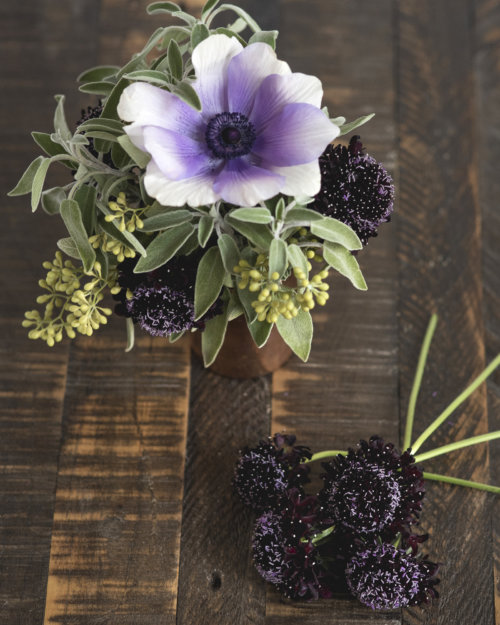
Ask Ella: Don’t Let Scabiosa’s Name Put You Off
Ask Ella is a recurring Garden Collage feature where we ask our in-house florist, Ella Stavonsky, about floral design– including the history of, origin, and maintenance that goes into some of the most intriguing flowers on the market today. This column is dedicated exclusively to common and rare varieties of flowers you’re likely to find at your local market. This week, we spotlight scabiosa, which despite the name is a quaint accent for arrangements.
***
Pincushion flower is better known by the evocative– and decidedly more unpleasant– name of scabiosa (a broad term that actually identifies the genus). As one might expect, the name of the genus derives from the herbal origin of scabiosa; in folk medicine, scabiosa is used to treat scabies.
The flower itself is generally unassuming, with a tiny moat of petals (properly florets) surrounding smaller, tighter heads. There are many colors, but the most common varieties are blues, purples, whites, and very vividly dark (almost black) purple-red.
“They have a cool movement in their shape,” Ella told GC. “They pair well with fiddleheads for that reason.” Small buttons of color, scabiosa also pairs well with other country garden types in the spirit of fiddleheads, like sweet peas or roses. “They will bloom slowly, so if you need them to last a long time, you can buy them still closed,” Ella advised. She used them earlier this year for our floral salon, which required advance prep– and they still looked perfect the next day. (Look for them in the top image– they are the small black accents.)
Of best care practices, Ella instructed: “Make sure you take off all the leaves, so that the water goes directly to the flowers. You can do shock therapy up to two times if they start to droop– just recut the stems and then place them in a couple of inches of steaming water for a few minutes.”


































